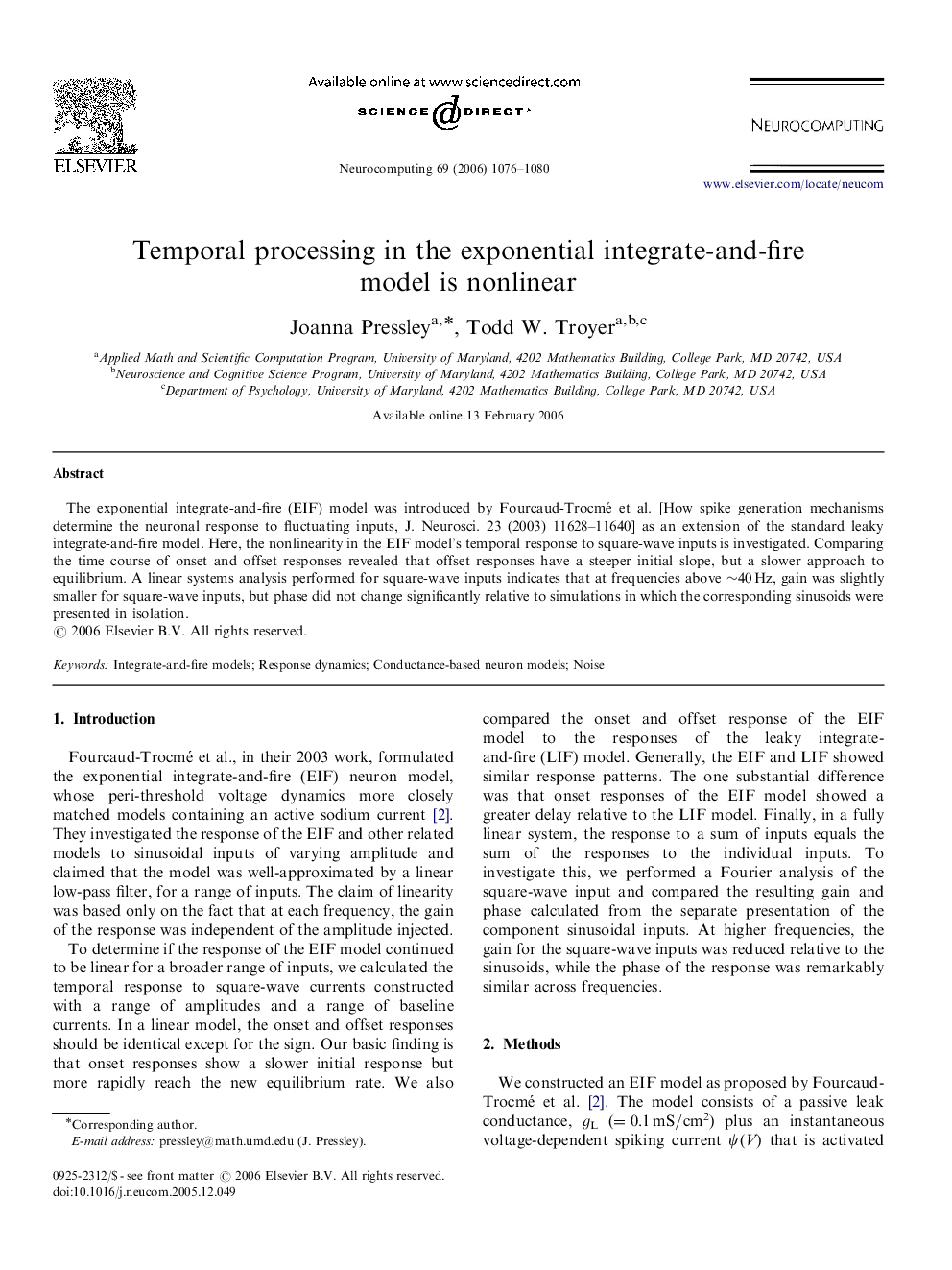| Article ID | Journal | Published Year | Pages | File Type |
|---|---|---|---|---|
| 408713 | Neurocomputing | 2006 | 5 Pages |
Abstract
The exponential integrate-and-fire (EIF) model was introduced by Fourcaud-Trocmé et al. [How spike generation mechanisms determine the neuronal response to fluctuating inputs, J. Neurosci. 23 (2003) 11628-11640] as an extension of the standard leaky integrate-and-fire model. Here, the nonlinearity in the EIF model's temporal response to square-wave inputs is investigated. Comparing the time course of onset and offset responses revealed that offset responses have a steeper initial slope, but a slower approach to equilibrium. A linear systems analysis performed for square-wave inputs indicates that at frequencies above â¼40Â Hz, gain was slightly smaller for square-wave inputs, but phase did not change significantly relative to simulations in which the corresponding sinusoids were presented in isolation.
Keywords
Related Topics
Physical Sciences and Engineering
Computer Science
Artificial Intelligence
Authors
Joanna Pressley, Todd W. Troyer,
